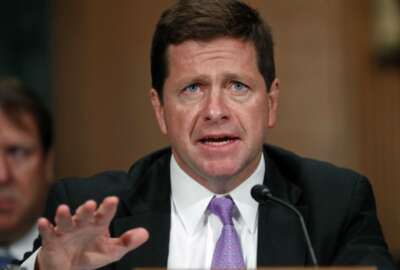

Maybe the IRS should issue an open challenge to modernize its master files.
I had to chuckle at our story last week. A “sense of urgency” takes root at the Internal Revenue Service over the age of its systems. A new generation of IRS execs, members of Congress and reporters all converge on an old topic.
The House Ways and Means Committee spent an hour last week reviewing IRS information technology. But at least one participant has a long, long history with IRS and its information technology. This 1992 report lists Gina Garza as a contributor. Twenty-five years later, Garza is the agency’s chief information officer. She testified at last week’s hearing.
The program formally called Tax Systems Modernization launched sometime around 1990. TSM underwent stops, restarts and resets. It cycled through executive after executive. The Government Accountability Office studied and restudied it. The IRS spent billions on it.
TSM itself had antecedents. In the 1980s, IRS began establishing long-distance communications links among its processing centers. Before that it flew reels of tape to the centers so they’d all be synchronized within a few days of transactions.
At the heart of tax system modernization efforts, generic or uppercase, lies the ability to deal with taxpayers. At the center of dealing with taxpayers sits the Individual Master File system like a giant, incomprehensible puzzle. This flat-file database was originally written in assembly language. Yes, it dates back to the 1960s, just like many systems operated by airlines and banks.
The IMF still works. It processes tax returns. But the essential challenge for the IRS has always been how to adapt the IMF to modern expectations.
Today those expectations are encompassed in the idea called digital government. Digital government implies self service, apps, rapid changes and corrections, and automatic, online notifications. The IRS still tells people things using the Postal Service. Using the Individual Master File to do digital government presents a challenge the IRS has been struggling with for a quarter century. The goals of modernization themselves have kept moving the whole time. Back in 1990, no one predicted that every taxpayer would have access to the Internet .
The IRS’ own ability to improve service and work more efficiently would also be enhanced by modernization. Newer code ought to be easier to update and repurpose. Every year, IRS goes through a fire drill to revise its code to reflect new tax code. That’s some doing when you’re operating 20 million lines of assembly.
For years, IRS had had a project called CADE — customer account data engine. It extracts data from the Individual Master Files and puts them in a relational database. At the hearing, Garcia and other officials talked about CADE-2. Now they say CADE-2 will “eventually replace” the IMF. That, they add, is a “complex, multistep process.” They’ve been saying that for 25 years.
The IRS seems to have mastered data extraction, but not logic extraction, or business rules mining, or code refactoring. Numerous vendors claim the ability to do this, so I don’t know why it’s taken the IRS 25 years.
Presuming the assembly language IMF presents the central technical challenge, maybe the IRS should try a whole new approach. I’m thinking of all of these supposedly big brains in Silicon Valley with their armies of bearded programmers who spend billions of man-hours devising new ways to deliver ads nobody wants. How could they help?
Suppose the IRS issued an open challenge. Here’s 20 million lines of code. Here’s what it has to do. Here’s the hardware architecture it needs to run on. Whoever can deliver a tested, working system of modern software in 12 months gets a billion dollars. Also-rans that really did something get a consolation prize of $10 million. But the winner would have to wait until the old and new systems ran side-by-side for a year and the IRS could be confident in the new one.
Handling 150 million returns a year, each in one of 150 million variations — no trivial task. Maybe the problem isn’t the task but the approach.
Copyright © 2025 Federal News Network. All rights reserved. This website is not intended for users located within the European Economic Area.
Tom Temin is host of the Federal Drive and has been providing insight on federal technology and management issues for more than 30 years.
Follow @tteminWFED

